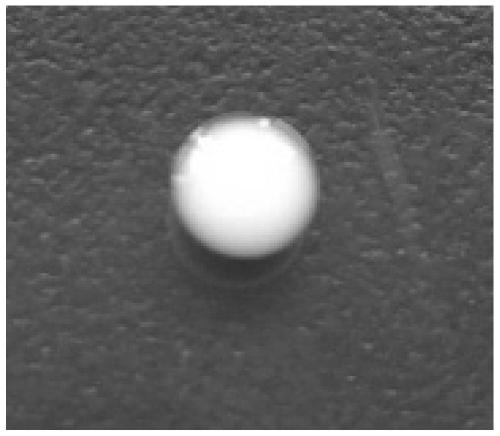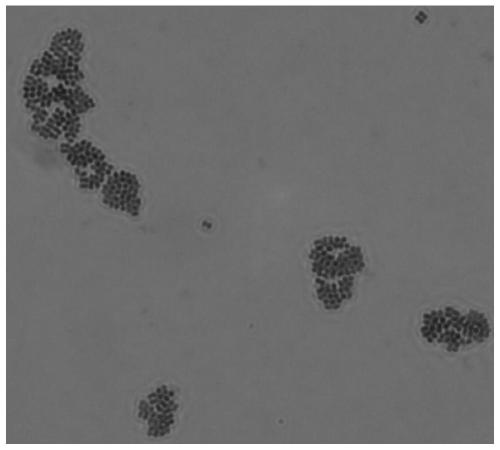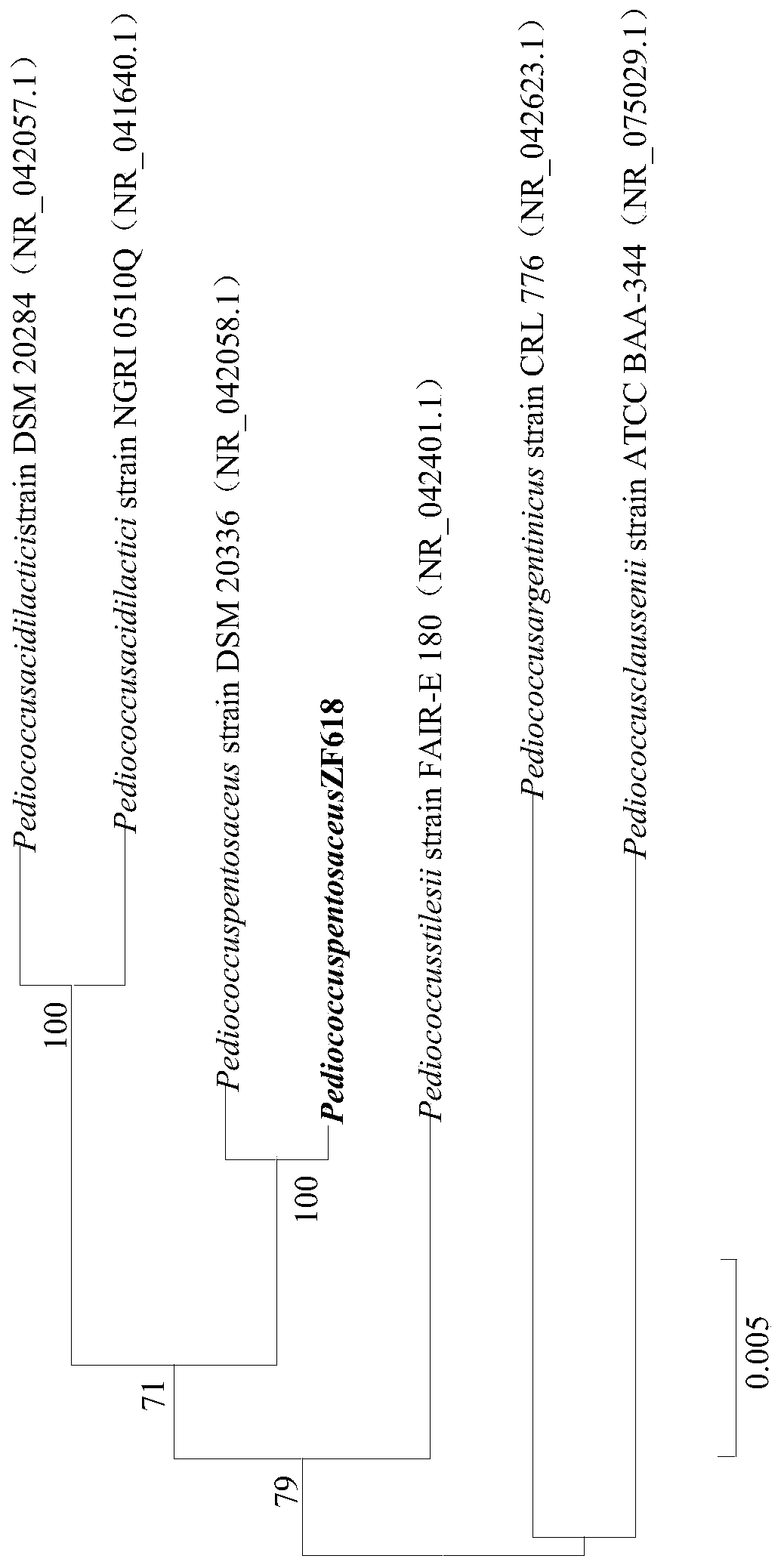A strain of Pediococcus pentosaceus zf618 and its application
A technology of Pediococcus pentosaceae and ZF618, which is applied in the preparation of bacteria, microorganisms, and alcoholic beverages, can solve problems such as insufficient non-volatile acid and total ester content, lack of beneficial microorganisms, and taste stimulation, so as to ensure food safety, The effect of fast aroma production and simple cultivation conditions
- Summary
- Abstract
- Description
- Claims
- Application Information
AI Technical Summary
Problems solved by technology
Method used
Image
Examples
Embodiment 1
[0051] Embodiment 1, the isolation of candidate bacterial strain
[0052] Use a sterile sampling bottle to sample naturally fermented rice wine koji and bring it back at low temperature; immediately dilute to 10 with sterile water -3 、10 -4 、10 -5 , spread on the MRS solid medium; then put it into an anaerobic constant temperature incubator at 30°C, and cultivate it for 48 hours; pick candidate colonies and separate them by streaking on the plate, repeat this 4 to 5 times until a pure single colony is obtained . Glycerol tubes were prepared from the purified individual plants and stored in a -70°C refrigerator.
[0053] Among them, the formula of MRS solid medium is as follows: peptone 10.0g, beef extract powder 5.0g, yeast extract powder 4.0g, triammonium citrate 2.0g, sodium acetate 5.0g, glucose 20.0g, Tween-801.0ml, K 2 HPO 4 2.0g, MgSO 4 ·7H 2 O0.2g, MnSO 4 4H 2 O 0.05g, agar 15.0g, distilled water 1.0L, pH value 6.2±0.2.
Embodiment 2
[0054] Example 2, Primary Screening of Candidate Strains—Flavoured Rice Wine
[0055] The candidate strains and Saccharomyces cerevisiae were mixed and inoculated into rice liquefaction mash, and fermented at 30°C for 10 days. Bacillus was used as a control to evaluate the difference in the ability of candidate strains to produce non-volatile acid from rice liquefied mash under alcoholic conditions.
[0056] Among them, the preparation method of rice liquefied mash is as follows: add water to the rice vinegar raw material rice according to the mass ratio of 1:1 to 1:5, raise the temperature and keep it at 92 to 95°C, add liquefied enzyme with a volume ratio of 1‰ to 1%, and stir for 20 to 200 minutes , complete the liquefaction of raw materials, lower the temperature to 25 to 40° C., and prepare rice liquefaction mash.
[0057] The test result of this embodiment is as follows:
[0058] Table 1 Detection results of non-volatile acid content in rice wine prepared by candidat...
Embodiment 3
[0061] Example 3, re-screening of candidate strains—flavored rice vinegar
[0062] The flavored wine mash obtained in Example 2 was prepared into rice vinegar through vinegar liquid submerged fermentation process, and the non-volatile acid and aroma components in rice vinegar were determined to evaluate the application effect of candidate strains in rice vinegar. The measurement results are shown in Table 2 and Table 3.
[0063] Table 2 Detection results of non-volatile acid content of rice vinegar prepared by candidate strains and control strains
[0064]
[0065] Table 3 Detection results of aroma components and content of rice vinegar prepared by candidate strains and control strains
[0066]
[0067] It can be seen from the above results that the rice vinegar prepared by candidate strain 1 has the most non-volatile acid content; the total content of aroma components is 0.54g / 100mL, which is much higher than that of the control strain and candidate strains 2 and 3;...
PUM
| Property | Measurement | Unit |
|---|---|---|
| diameter | aaaaa | aaaaa |
Abstract
Description
Claims
Application Information
 Login to View More
Login to View More - R&D
- Intellectual Property
- Life Sciences
- Materials
- Tech Scout
- Unparalleled Data Quality
- Higher Quality Content
- 60% Fewer Hallucinations
Browse by: Latest US Patents, China's latest patents, Technical Efficacy Thesaurus, Application Domain, Technology Topic, Popular Technical Reports.
© 2025 PatSnap. All rights reserved.Legal|Privacy policy|Modern Slavery Act Transparency Statement|Sitemap|About US| Contact US: help@patsnap.com



